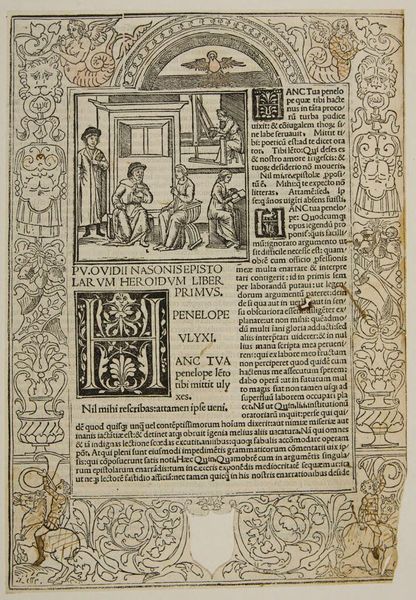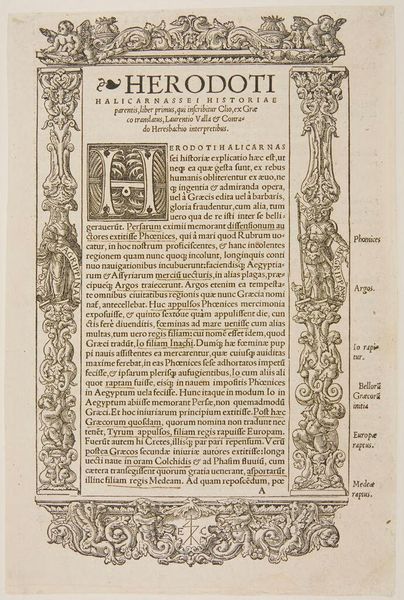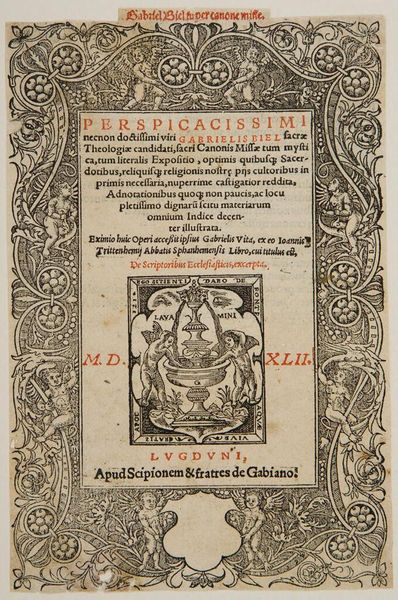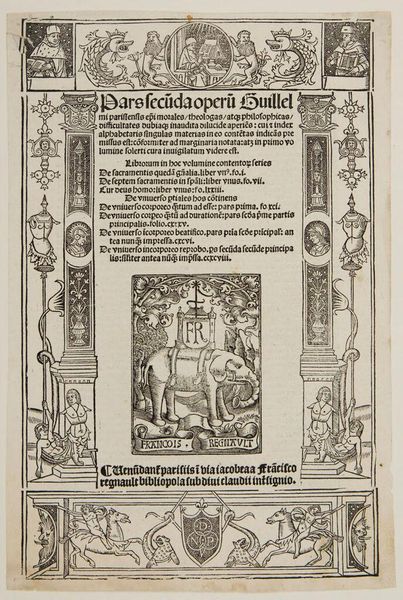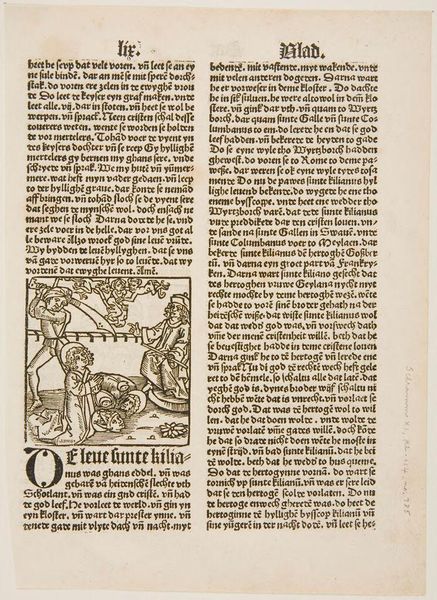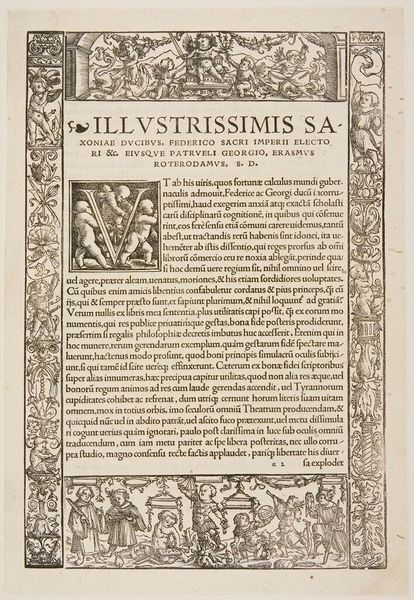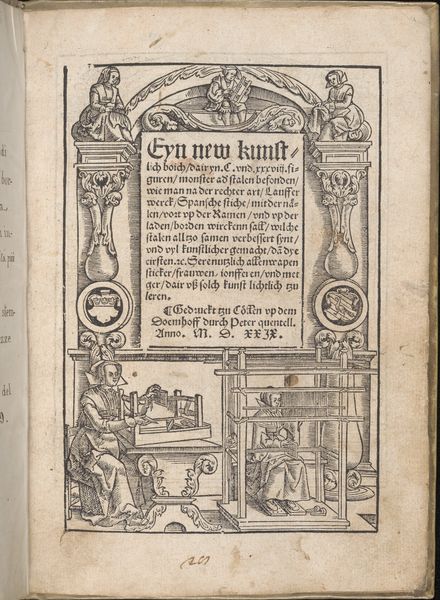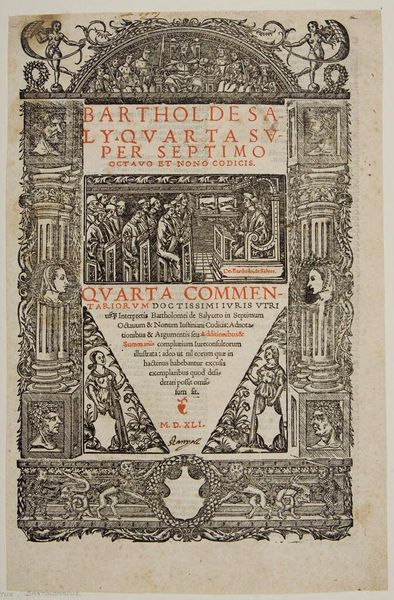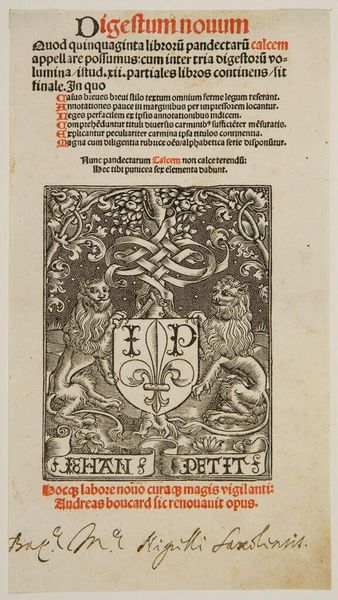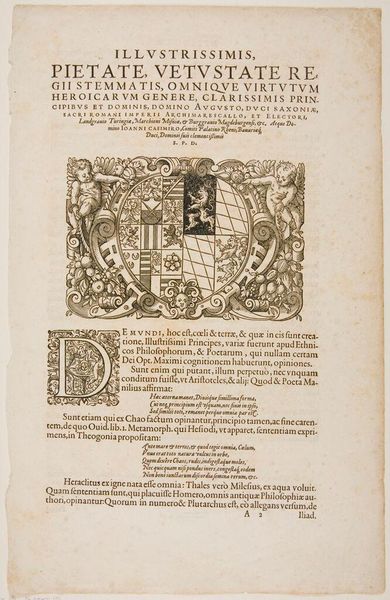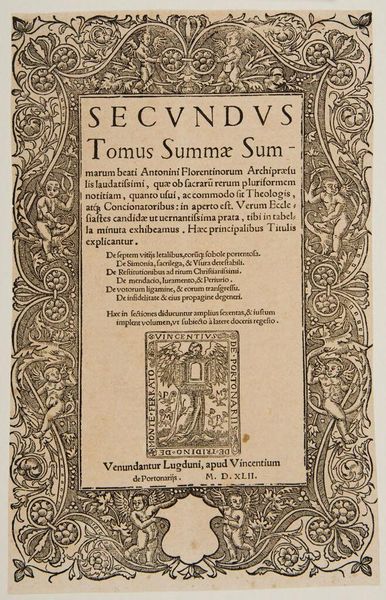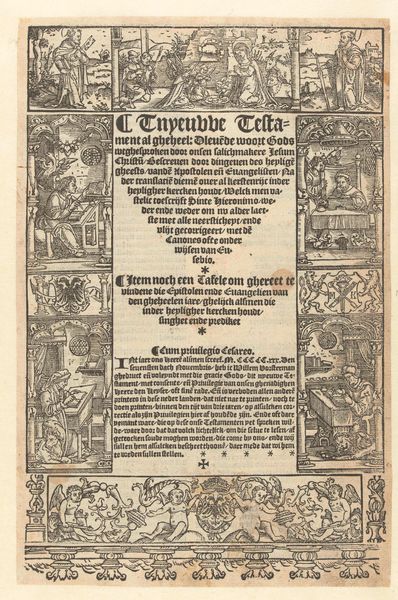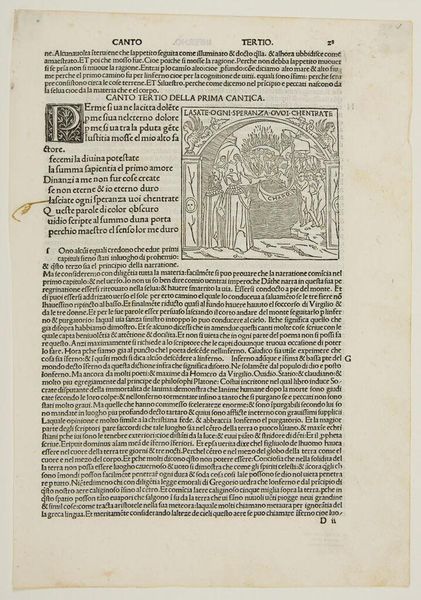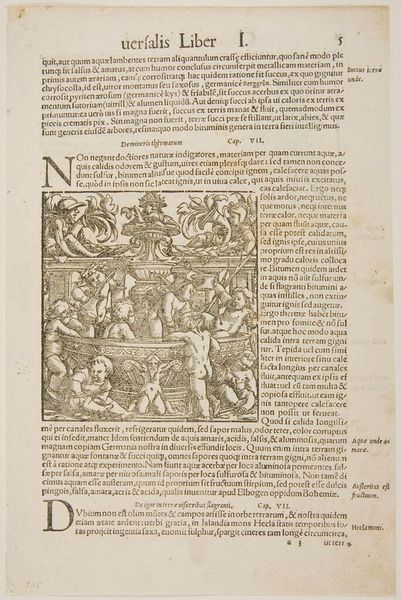
Copyright: CC0 1.0
Editor: Here we have Hans Holbein the Younger’s title page for Sir Thomas More’s "Utopia." It’s a dense, detailed woodcut that feels incredibly ornate. What kind of symbolic language is at play here? Curator: It's fascinating how Holbein uses the classical architectural framework, populated with putti and garlands. These aren’t just decorative; they evoke a sense of a lost golden age, a visual memory of a harmonious world. Look how the putti are actively engaged, as if inviting us into this ideal society. It creates a powerful visual rhetoric. Editor: So, the imagery is meant to suggest a connection between Utopia and the classical world? Curator: Precisely. And consider the prominent display of the Caduceus at the bottom—typically associated with medicine, commerce, and negotiation. What do you think its inclusion suggests about Utopia’s societal values? Editor: It hints at a society where well-being, trade, and diplomacy are valued, perhaps? I hadn’t noticed that before. Curator: Exactly. These recurring emblems tell us as much about the aspirations of More's era as about his invented society. It's a dialogue between past and present, reality and aspiration. Editor: I see it now. The image speaks to both a longing for the past and a vision for the future. Thank you!
Comments
No comments
Be the first to comment and join the conversation on the ultimate creative platform.
